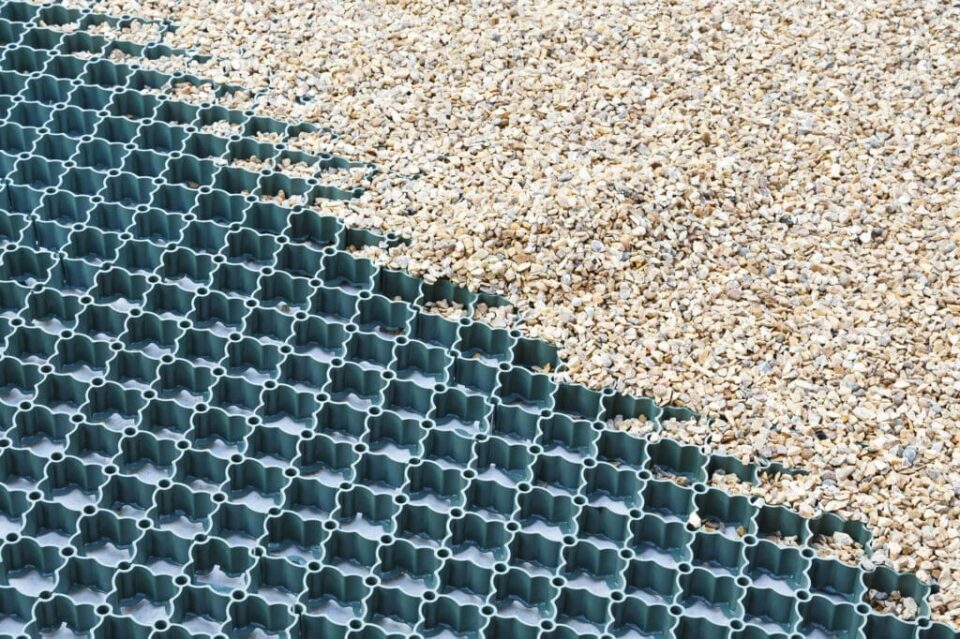Ground stability is a crucial aspect of any construction or landscaping project, whether it’s for driveways, pathways, parking areas, or garden features. Without proper reinforcement, surfaces can become uneven, susceptible to erosion, and difficult to maintain. To address these challenges, gravel grids provide a reliable solution that enhances ground stability while maintaining a visually appealing, natural finish. These modular systems offer a practical and cost-effective way to stabilize gravel surfaces, preventing issues such as displacement, rutting, and surface wear.
Gravel grids are specifically designed to keep loose gravel in place, ensuring a flat and even surface that can withstand pedestrian and vehicular traffic. With their honeycomb structure, these grids provide excellent load-bearing capacity and prevent the gravel from spreading, making them ideal for both residential and commercial applications. Using gravel grids not only improves the functionality of a surface but also adds to its aesthetic appeal, creating a neat, organized look that blends seamlessly into outdoor settings.
What Are Gravel Grids and How Do They Work?
Gravel grids are modular systems made from high-strength materials, usually recycled plastic, that are laid beneath the gravel to provide structure and support. Their interlocking design allows for easy installation and ensures that the grids stay securely in place, even under heavy loads. Once installed, gravel is spread over the grids, filling the honeycomb cells to create a solid yet permeable surface. This structure prevents the gravel from shifting or scattering, maintaining the integrity of the surface over time.
The open-cell design of gravel grids allows for natural drainage, which is essential for preventing water accumulation and reducing the risk of flooding. Unlike traditional paving materials, gravel grids promote permeability, making them an eco-friendly solution that supports sustainable drainage systems. This makes them particularly effective in areas prone to waterlogging or where managing surface runoff is a concern.
Applications and Benefits of Using Gravel Grids
Gravel grids are versatile and can be used in a variety of settings. Some of the most common applications include:
- Driveways and Parking Areas: Gravel grids provide a stable base for driveways and parking areas, preventing ruts and depressions caused by vehicle traffic. They distribute weight evenly across the surface, reducing the risk of surface damage.
- Garden Paths and Walkways: Gravel grids are perfect for creating durable and low-maintenance garden paths. They keep the gravel in place, ensuring a smooth and slip-resistant surface that remains visually appealing.
- Erosion Control: For sloped areas or locations with loose soil, gravel grids help prevent erosion by stabilizing the ground and maintaining the structure of the surface.
- Event and Temporary Surfaces: Gravel grids are ideal for creating temporary surfaces for events or construction sites. They can be quickly installed and removed, providing a solid surface without the need for permanent alterations.
Advantages of Using Gravel Grids
Using gravel grids offers a range of benefits compared to traditional surfacing options:
- Enhanced Stability and Load-Bearing Capacity: Gravel grids are designed to support heavy loads, making them suitable for both light and heavy-duty applications. Their structure distributes weight evenly, preventing the surface from shifting or sinking.
- Easy Installation: The interlocking design of gravel grids allows for quick and easy installation, even on uneven or sloped surfaces. This reduces labor costs and project timelines.
- Reduced Maintenance: Gravel grids prevent gravel from scattering, reducing the need for frequent top-ups or surface repairs. This makes them a low-maintenance solution for driveways, paths, and other gravel surfaces.
- Eco-Friendly and Permeable: Gravel grids support natural drainage, allowing water to pass through the surface and reduce surface runoff. This makes them an environmentally friendly choice for projects that require sustainable drainage solutions.
- Versatile and Aesthetic: Gravel grids can be used with different types of gravel or decorative stones, allowing for creative design options that enhance the visual appeal of outdoor spaces.
Choosing the Right Gravel Grid for Your Project
When selecting a gravel grid system, it’s essential to consider the specific requirements of your project. Factors such as load-bearing capacity, cell size, and grid thickness will influence the performance and durability of the grid. For heavy-duty applications like driveways or parking areas, opt for grids that are designed to handle high loads. For lighter applications, such as garden paths or decorative features, thinner grids may be more suitable.
Additionally, look for gravel grids made from UV-stabilized and weather-resistant materials to ensure long-term durability and performance. Choosing a reputable supplier that offers a variety of options and professional guidance will help ensure that you find the best solution for your needs.
Conclusion
In conclusion, gravel grids are a versatile and effective solution for stabilizing gravel surfaces in a wide range of applications. From driveways and parking areas to garden paths and erosion control, they provide a solid foundation that enhances both functionality and appearance. By choosing the right gravel grid system, you can create a durable, low-maintenance surface that supports natural drainage and stands up to the demands of daily use.

